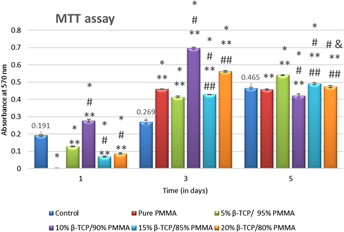Crossref Citations
This article has been cited by the following publications. This list is generated based on data provided by
Crossref.
Luo, You-Ran
Zhang, Li
Chen, Cheng
Sun, Dong-Yuan
Wu, Peng
Wang, Yue
Liao, Yun-Mao
Cao, Xiao-Yan
Cheng, Cheng-Kung
Tang, Zi-Qing
and
Liang, Xing
2018.
The delayed degradation mechanism and mechanical properties of β-TCP filler in poly(lactide-co-glycolide)/beta-tricalcium phosphate composite suture anchors during short-time degradation in vivo.
Journal of Materials Research,
Vol. 33,
Issue. 24,
p.
4278.
Singamneni, Sarat
Velu, Rajkumar
Behera, Malaya Prasad
Scott, Sonya
Brorens, Peter
Harland, Duane
and
Gerrard, Juliet
2019.
Selective laser sintering responses of keratin-based bio-polymer composites.
Materials & Design,
Vol. 183,
Issue. ,
p.
108087.
Tan, Lisa Jiaying
Zhu, Wei
and
Zhou, Kun
2020.
Recent Progress on Polymer Materials for Additive Manufacturing.
Advanced Functional Materials,
Vol. 30,
Issue. 43,
Ilhan, Elif
Karahaliloglu, Zeynep
Kilicay, Ebru
Hazer, Baki
and
Denkbas, Emir Baki
2020.
Potent bioactive bone cements impregnated with polystyrene-g-soybean oil-AgNPs for advanced bone tissue applications.
Materials Technology,
Vol. 35,
Issue. 3,
p.
179.
Venkatesan, K.
Mary Mathew, Ann
Sreya, P.V.
Raveendran, Subina
Rajendran, Archana
Subramanian, B.
and
Pattanayak, Deepak K.
2021.
Silver - calcium titanate – titania decorated Ti6Al4V powders: An antimicrobial and biocompatible filler in composite scaffold for bone tissue engineering application.
Advanced Powder Technology,
Vol. 32,
Issue. 12,
p.
4576.
Velu, Rajkumar
Jayashankar, Dhileep Kumar
and
Subburaj, Karupppasamy
2021.
Additive Manufacturing.
p.
635.
Bertoldo Menezes, D.
Reyer, A.
Benisek, A.
Dachs, E.
Pruner, C.
and
Musso, M.
2021.
Raman spectroscopic insights into the glass transition of poly(methyl methacrylate).
Physical Chemistry Chemical Physics,
Vol. 23,
Issue. 2,
p.
1649.
Velu, Rajkumar
Sathishkumar, R.
and
Saiyathibrahim, A.
2022.
Advanced Additive Manufacturing.
Whenish, Ruban
Velu, Rajkumar
Anand Kumar, S.
and
Ramprasath, L. S.
2022.
High-Performance Composite Structures.
p.
25.
Schappo, Henrique
Giry, Karine
Salmoria, Gean
Damia, Chantal
and
Hotza, Dachamir
2023.
Polymer/calcium phosphate biocomposites manufactured by selective laser sintering: an overview.
Progress in Additive Manufacturing,
Vol. 8,
Issue. 2,
p.
285.
Ngo, Truc T.
and
Kim, Jae D.
2023.
Controlled Release of Flurbiprofen from 3D-Printed and Supercritical Carbon Dioxide Processed Methacrylate-Based Polymer.
Pharmaceutics,
Vol. 15,
Issue. 4,
p.
1301.
Ramachandran, Murali Krishnan
Raigar, Jairam
Kannan, Manigandan
and
Velu, Rajkumar
2023.
Digital Design and Manufacturing of Medical Devices and Systems.
p.
1.
Arivazhagan, Adhiyamaan
Mani, Kalayarasan
Kamarajan, Banu Pradheepa
A G S, Saai Aashique
S, Vijayaragavan
Riju, Arthik A.
and
G, Rajeshkumar
2025.
Mechanical and biocompatibility studies on additively manufactured Ti6Al4V porous structures infiltrated with hydroxyapatite for implant applications.
Journal of Alloys and Compounds,
Vol. 1010,
Issue. ,
p.
177966.



